Why the pull-up bar for ceiling mounting?
Pull-ups are one of the most effective exercises for the upper body. They not only train the back, but also the arms, shoulders and core - all with just one movement. However, many bars restrict your freedom of movement due to their position.
Ceiling mounting solves this problem:
- Maximum freedom of movement: Unlike door frame or wall models, you can fully unhook yourself from the ceiling bar. This takes the strain off your spine, improves your posture and enables advanced exercises such as the front lift.
- Stability and versatility: With a load capacity of 180 kg and five grip positions, you can easily try out different training styles - from classic pull-ups to exercises with gymnastic rings or sling trainers.
- Space-saving: Perfect for small spaces. The bar does not take up any floor space and leaves you enough room for your workouts.
-
Versatile grip positions The bar often offers several grip options, including
- Neutral grip: Easy on the joints and ideal for beginners.
- Wide gripPerfect for the broad back muscle (latissimus).
- Tight grip: Focuses on the lower back and arm strength.

The best exercises with the overhead pull-up bar
A pull-up bar is far more versatile than you might think at first glance. It allows a variety of exercises that target different muscle groups and are suitable for both beginners and advanced users.
1. classic pull-ups (pull-ups)

Pull-ups are the supreme discipline in upper body training. They train the latissimusthe armsthe shoulders and the core.
-
Variations:
-
Wide grip: Emphasizes the upper back and shoulders.
-
Neutral grip: Protects the wrists and activates the arm flexors more.
-
Tight gripIdeal for the lower back and biceps.
Tip: Use a pull-up bandto make the movement easier if you still find regular pull-ups difficult.
[product="P-00095"]
2. chin-ups - focus on the biceps

This variation of the pull-up uses the underhand grip (palms facing you). This focuses on the biceps is put under greater strain while the back continues to be trained effectively.
Technique tip: Keep your body as still as possible to better isolate the target muscles.
3. leg raises - core and hip training

Hang from the bar and slowly lift your legs upwards. This exercise trains the abdominal muscles and improves the flexibility of your hip flexors.
-
Beginner versionRaise your legs at an angle.
-
Advanced versionRaise your legs straight and lower them in a controlled manner.
Advantage: Not only promotes the abdominal muscles, but also strengthens the grip.
4. toes to bar - for maximum core strength

This is a more intensive version of the leg lift. Bring your feet up to the bar and lower them in a controlled manner.
-
Muscles trainedAbdominals, hips, lower back and grip strength.
-
Difficulty levelHigh - ideal for advanced users.
5. l-sit pull-ups - abdominals and upper body combined

Combine the L-sit with pull-ups. Keep your legs stretched at a 90-degree angle and perform pull-ups at the same time.
-
Benefit: Trains core stability, back and arms in a single movement.
6. frontlever - for full body tension

The frontlever is a challenging exercise that keeps your body parallel to the floor.
-
Muscles trainedBack, abdomen, shoulder girdle.
-
Progression:
-
Start with your legs drawn up.
-
Work your way up to straight legs.
Tip: Use a pull-up band to practise the technique.
7. backlever - backwards into strength

The backlever is a static exercise that is performed in a similar way to the frontlever, but backwards.
-
Effect: Strengthens the stability of the torso and shoulders.
To our ceiling pull-up bar!
Advanced training techniques with gymnastic rings and sling trainers
The pull-up bar for ceiling mounting not only provides a stable base for classic pull-ups, but also a platform for integrating accessories such as gymnastic rings or a sling trainer. These tools expand your training enormously and add functional, dynamic elements to your routine. Let's take a closer look at the exercises so that you understand the benefits they offer and how to perform them correctly.
Training with gymnastic rings: Maximum instability, maximum efficiency
Gymnastic rings are one of the most versatile and challenging pieces of training equipment. Their movable handles increase instability, which not only activates the target muscles but also the stabilizing muscles.
1st ring dips - focus on triceps, chest and shoulders

-
Execution:
-
Set the gymnastic rings to a height that you can comfortably reach.
-
Grasp the rings, jump slightly and bring your body into an upright position with your arms straight.
-
Bend your elbows slowly and in a controlled manner until your shoulders are slightly below your elbows.
-
Push yourself powerfully back to the starting position.
-
Muscles trained:
-
TricepsThe main motor in the pressing movement.
-
Chest muscles: The lower part in particular is heavily used.
-
Front shouldersStabilization and support in the downward movement.
-
Tip for beginnersKeep your feet on the floor or use a resistance band to make the exercise easier.
-
Special feature: The instability of the gymnastic rings challenges your deep muscles and improves shoulder stability in the long term.
2nd ring rowing - the classic exercise for the upper back

-
design:
-
Position the gymnastic rings at hip height and lie underneath them. Keep your feet on the floor while keeping your body in line.
-
Grip the rings with a neutral grip (palms facing each other).
-
Pull your body up until the rings touch your chest and then slowly lower yourself down.
-
Muscles trained:
-
Rhomboids and trapezius musclesThese muscles pull the shoulder blades together.
-
Latissimus: Supports the pulling movement.
-
Biceps: Activated during arm flexion.
-
Variations:
-
Light: Place your feet closer to the pull-up bar.
-
Heavy: Fully extend your legs or place them on a raised platform.
Benefit: Ring rowing not only improves upper back strength, but also corrects postural problems by strengthening the often neglected back muscles.
Sling trainer: functional training for the whole body
A sling trainer allows you to perform exercises at different angles. You not only train strength, but also stability and coordination.
1. suspended push-ups - intensive chest and shoulder training

-
Execution:
-
Suspend the sling trainer so that the handles are at chest height.
-
Grip the handles and get into a push-up position. Your body forms a straight line.
-
Bend your elbows and slowly lower your body until the handles almost touch your chest.
-
Push yourself powerfully back to the starting position.
-
Muscles trained:
-
Chest muscles: The upper part in particular works intensively.
-
Front shoulders: Support the pressing movement.
-
TricepsActive in the extension of the arm.
-
Adjust difficulty:
-
Easy: Stand up straighter to put less pressure on the arms.
-
Hard: Reduce the angle by moving your feet further back.
Tip: Control the movement and avoid dropping your hips to protect your lower back.
2. pistol squats - strength, balance and mobility for the legs

-
Version:
-
Position the sling trainer at hip height and grasp both handles with outstretched arms.
-
Lift one leg off the floor and stretch it forward.
-
Slowly lower yourself into a squat on your standing leg while using the handles to stabilize yourself.
-
Push yourself up again in a controlled manner.
-
Muscles trained:
-
QuadricepsMain muscle in the leg extension.
-
Gluteus maximusActive when pushing up.
-
Calf muscles: Stabilizes the ankle joint.
-
Advantage: Pistol squats not only promote leg strength, but also flexibility and balance.
Why accessories such as gymnastic rings and sling trainers are so effective
-
Increase instabilityThe movable handles not only address the target muscles, but also small stabilizer muscles that are often neglected.
-
Versatility: With just a few adjustments, you can perform a variety of exercises that cover the entire body.
-
CompactnessGym rings and sling trainers take up very little space, making them the perfect addition to your home gym.
More than just pull-ups!
The pull-up bar for ceiling mounting is a true all-rounder that, in combination with accessories such as gymnastic rings or a sling trainer, takes your training to the next level. Whether you want to strengthen your upper body, train your core muscles or improve your balance - this combination offers you everything you need.
Try out the exercises presented and discover how varied and effective your training can be with the right tools!
Are you looking for the right calisthenics accessories to train the exercises listed above effectively?
At Pullup & Dip, we offer you high-quality calisthenics accessories for indoor & outdoor.

Other recommended articles:
The top 8 calisthenics exercises for a massive chest
Calisthenics - everything you need to know about the sport
Training with your own body weight - the 11 best calisthenics exercises for beginners
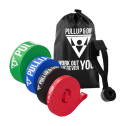
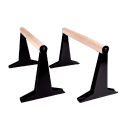
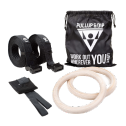


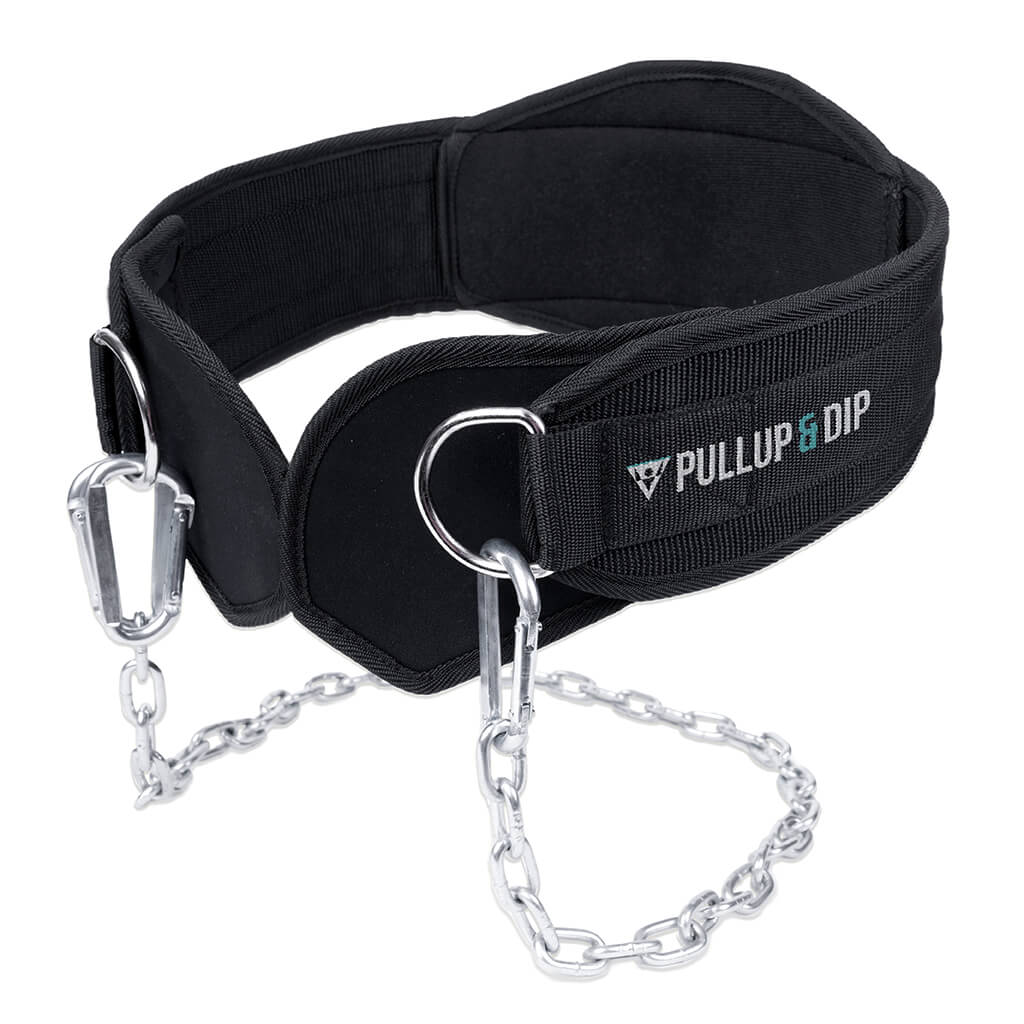
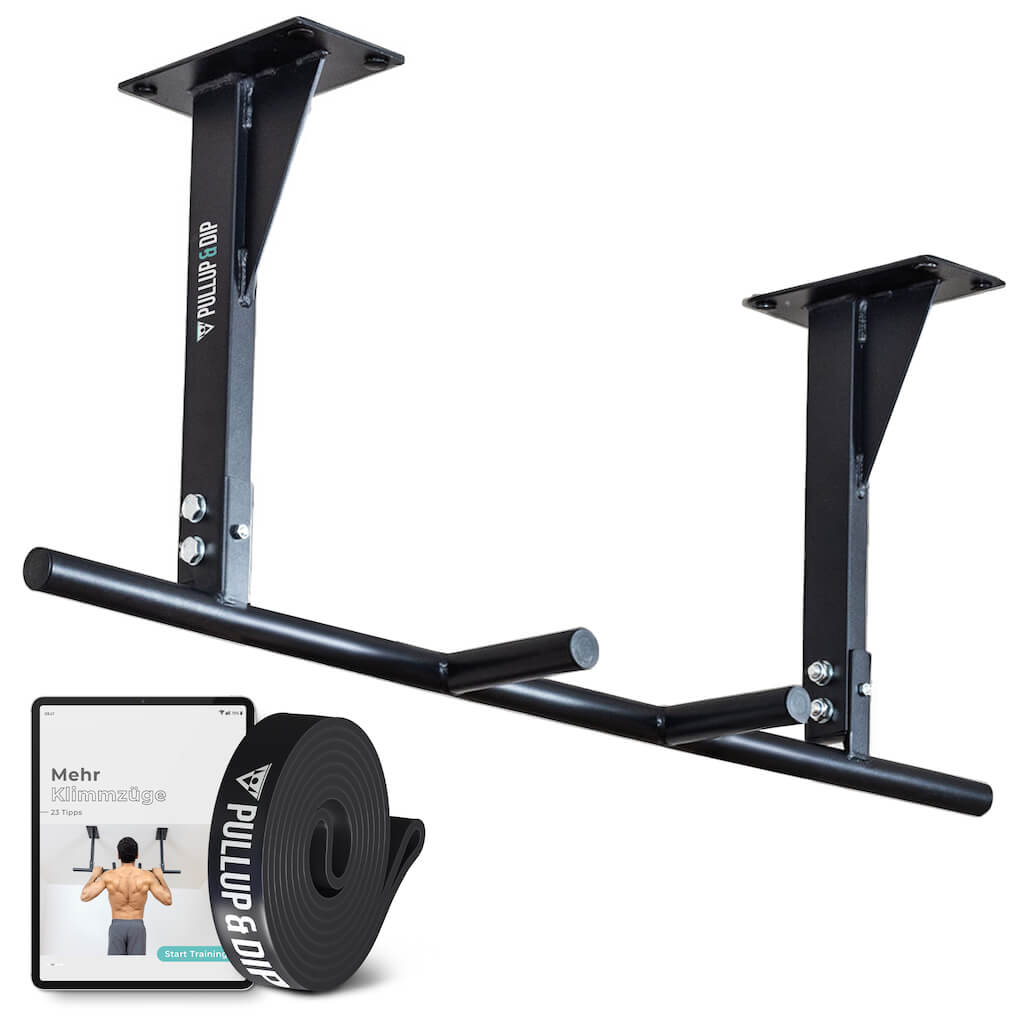
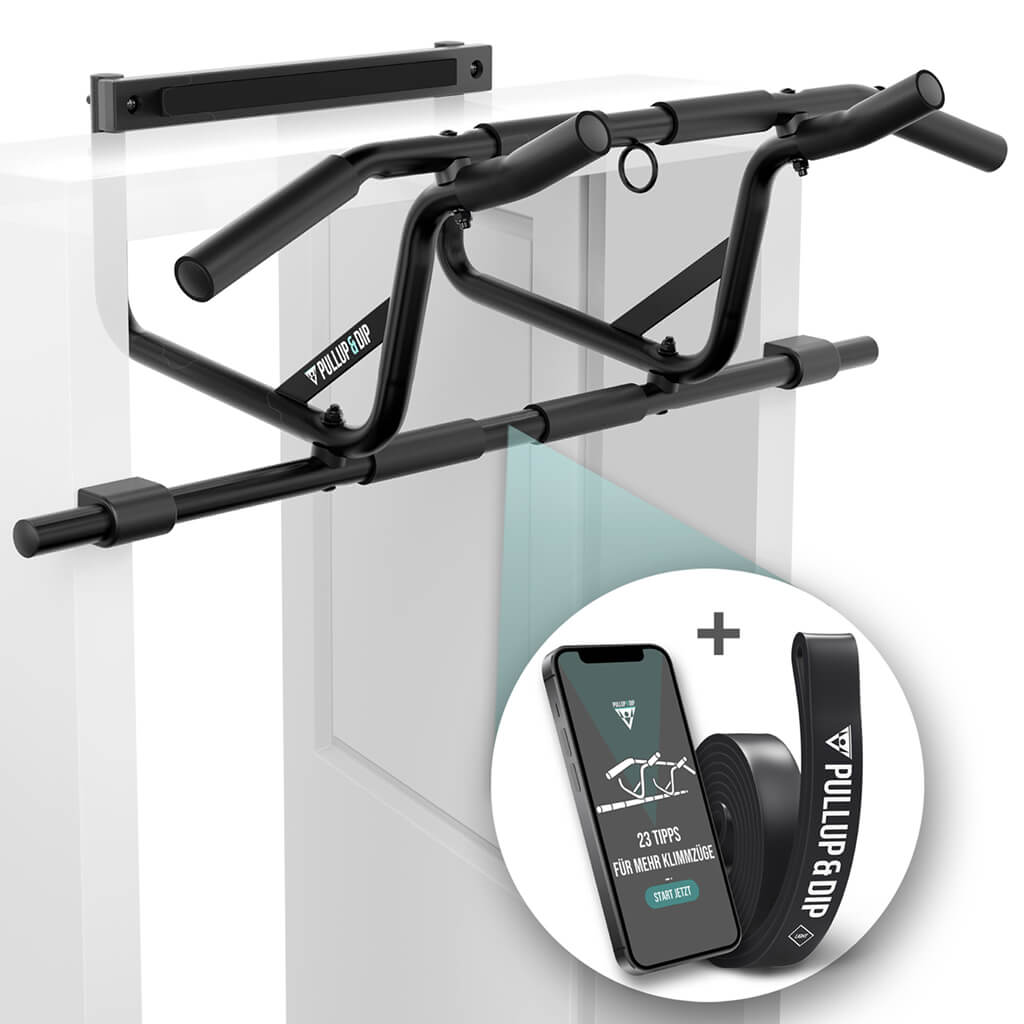
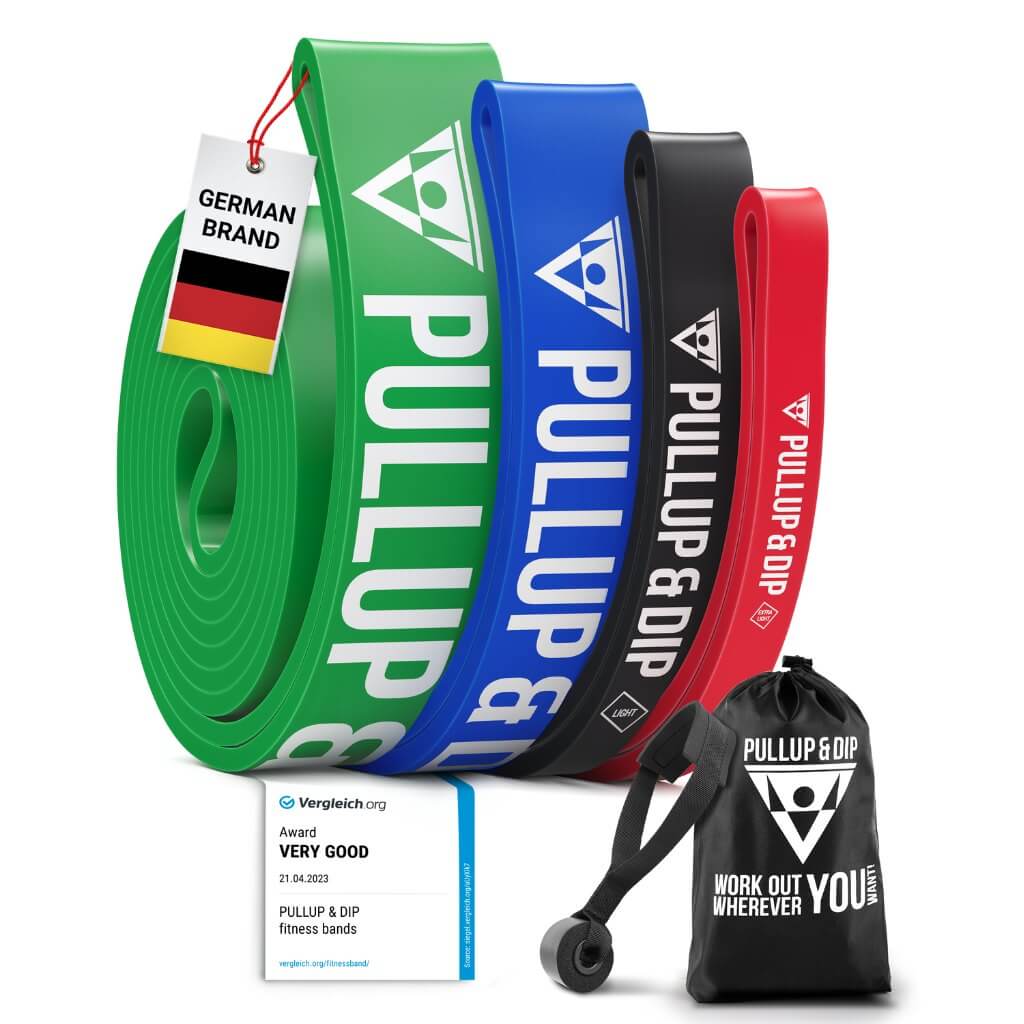

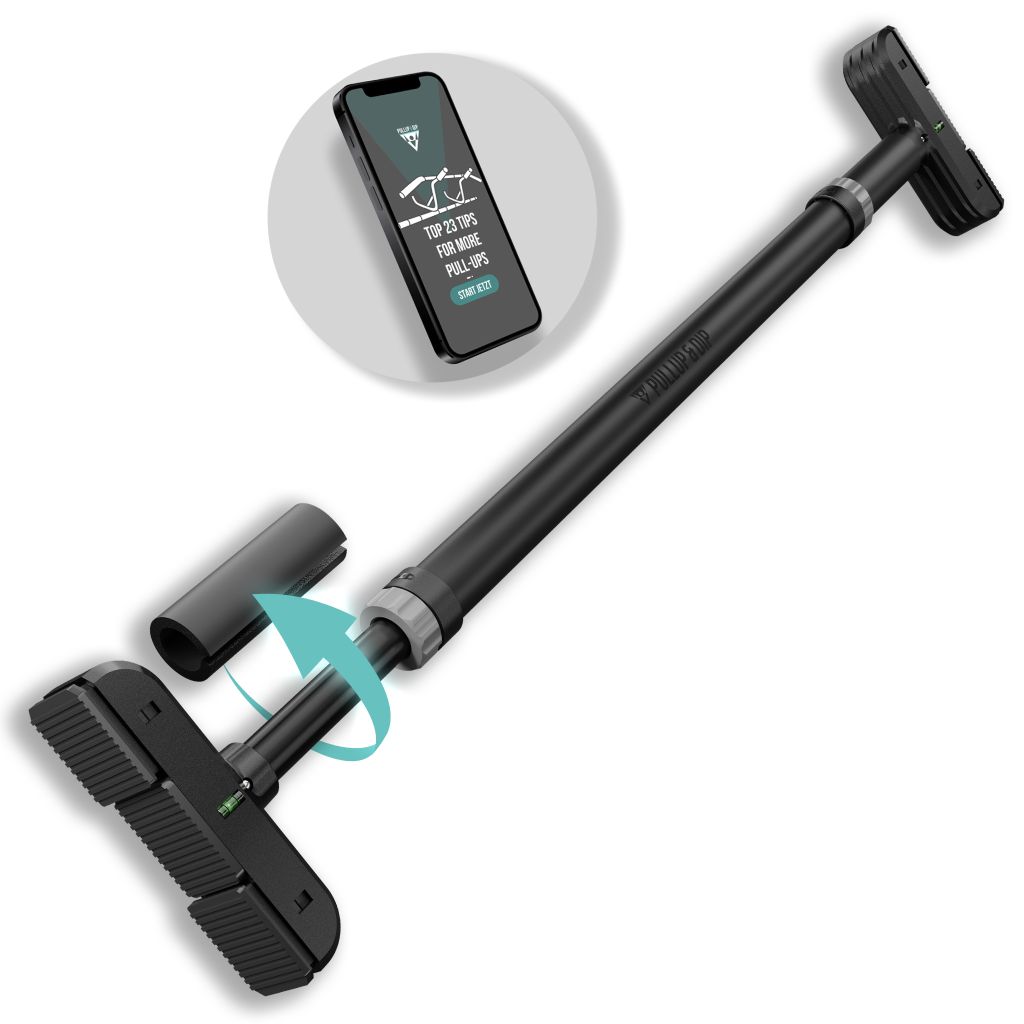
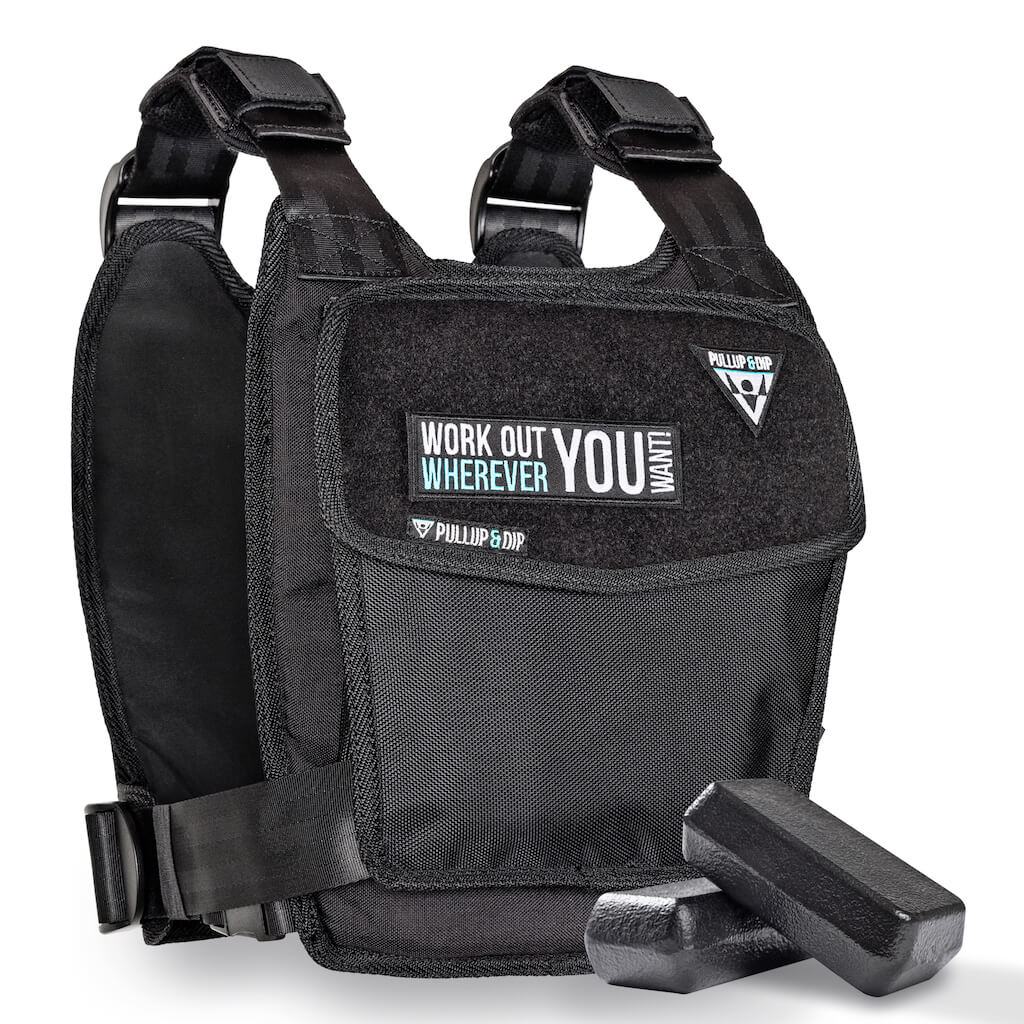
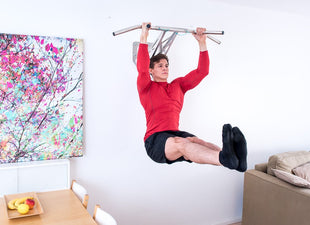
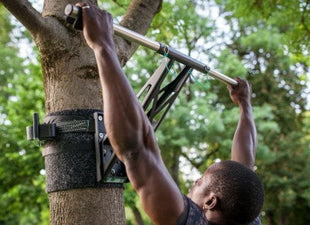
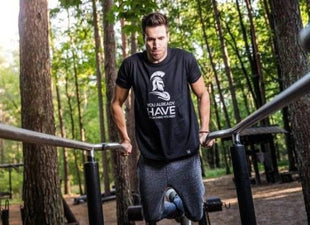
Leave a comment
All comments are moderated before being published.
This site is protected by hCaptcha and the hCaptcha Privacy Policy and Terms of Service apply.